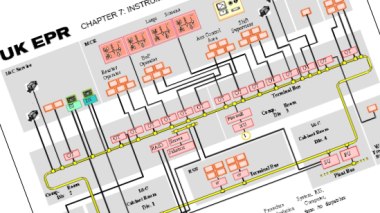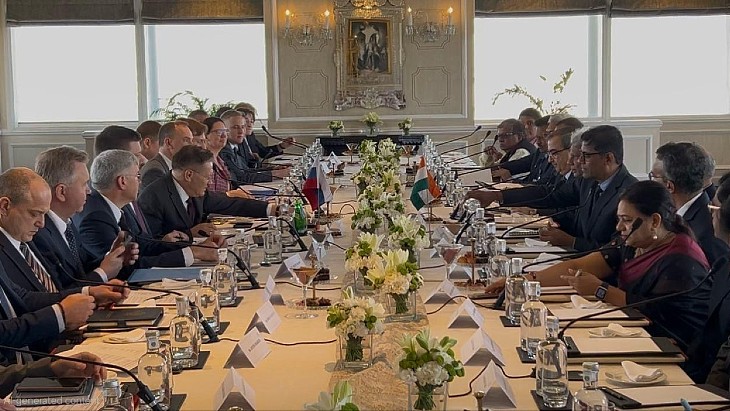
A detail from Areva's UK documentation
Areva has come under pressure after a joint statement from safety regulators urged it to revise control systems for its EPR design.
A message today from British, Finnish and French nuclear safety regulators put it plainly: "The EPR design, as originally proposed by the licensees and the manufacturer, Areva, doesn't comply with the independence principle, as there is a high degree of complex interconnectivity between the control and safety systems."
Reactor designers need to maintain independence between routine control systems and the systems that maintain safety in unusual conditions. This is because some of the safety systems protect against the failure of control systems and for that reason it should be impossible for them to fail together.
This means Areva must re-work the systems to establish sufficient independence while still meeting the varying requirements of the three countries. This is made more difficult for the EPRs in advanced stages of construction in Finland and France, while the UK and US regulatory systems require all studies be complete before construction begins.
In response to the unusual public statement, Areva noted that that actual safety of the EPR has not been questioned. France's Nuclear Safety Authority (Autorité De Sûreté Nucléaire, ASN) posed questions on the topic in October and Areva is "committed" to answering them by the end of this year. The Health and Safety Executive of the UK noted the seriousness of the issue in April and Stuk of Finland first raised queries in December 2008.
The EPR under construction at Olkiluoto is expected to be changed to include a separate analogue back-up system in addition to the current digital I&C set-up. This could be an option for the specific model under construction at Flamanville in France and planned for the UK, and British regulators have previously suggested this to Areva. In Britain, the problem could lead to the exclusion of the instrumentation and control system from EPR's Generic Design Acceptance, meaning that a separate licensing process would have to take place for a new control and safety solution.
Construction on two EPRs at Taishan, China is in the early stages with Chinese authorities likely to follow the ASN. American regulators have not made any public statements on the issue and continue to study the design for future deployment.





_70761.jpg)
_55530.jpg)
_42372.jpg)
_76087_55556.jpg)




